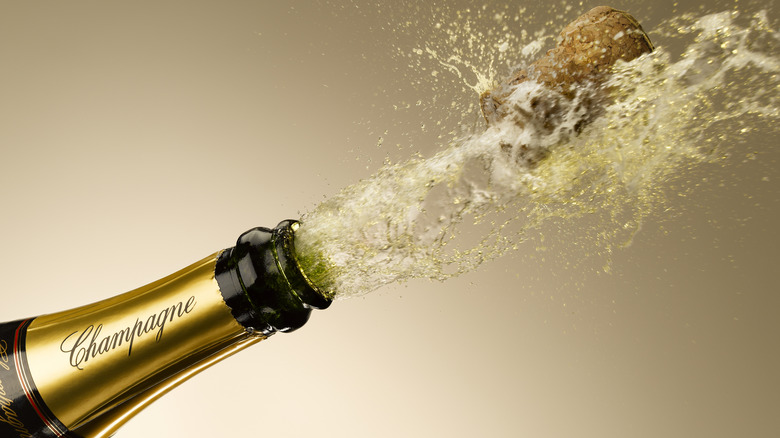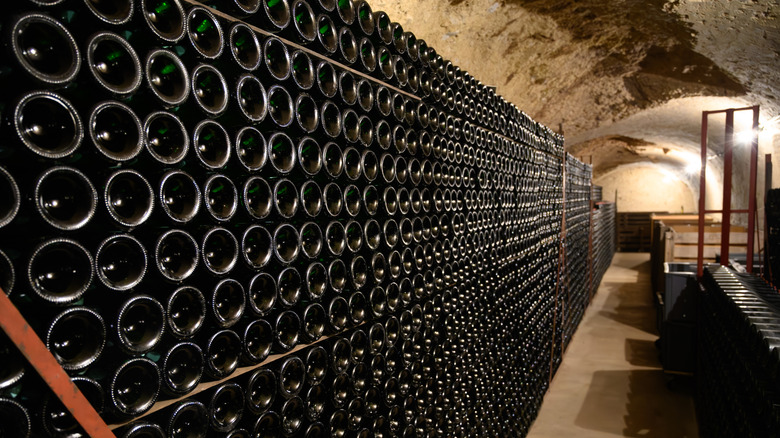Here's How Long Your Unopened Bottle Of Champagne Will Last
If you're going through old wine bottles you're storing and find Champagne that you bought for New Year's Eve sometime in the last decade (or that you purchased to toast the end of the quarantine), you might be wondering if it's still good to drink. Wrack your brain for the possible year you bought it, because while Champagne does last a long time, it can also lose some of what makes it such a fun, bubbly drink.
With that in mind, non-vintage Champagnes, made from grapes from a variety of years and aged anywhere from 15 months and up, are good for up to four years. Meanwhile, vintage Champagnes, which are made from grapes that were harvested in a single growing season and have been aged for at least three years (this is the more expensive type), are usually good for up to 10 years.
You can tell if your Champagne is vintage or non-vintage by checking the label. If there is a year listed, you have a vintage Champagne, which was made from grapes from only that growing season or year. Non-vintage Champagnes don't have any year listed on the bottle, because they were made from a blend of grapes from multiple years.
How to properly store Champagne and does it go bad?
Unless you are drinking your Champagne the same day you bring it home, it's better not to pop it in your kitchen fridge (and certainly not in the fridge door where the bubbles will constantly be shaken up). When it comes to long-term storage, a dark spot with a temperature ideally between 45 and 50 degrees Fahrenheit is your best bet — and if you have a wine rack that will keep the bottle horizontal, all the better.
If you find a bottle that you have forgotten about but you're sure that you're within the time window to drink it, you can just do a quick double-check. Before you even pop the cork, do you see anything sand-like settled at the bottom of the bottle or does the Champagne appear cloudy? If so, your wine may have spoiled, but you can still open the bottle and give it a sniff. If it's more sour than sweet and the color is dark when you pour it, it is probably past its prime.
On the plus side, it's unlikely that anything bad will happen to you if you drink spoiled Champagne. In fact, if your Champagne otherwise looks and tastes fine but has lost its effervescence (those bubbles that dance on the tongue), you could still use it for cooking.

